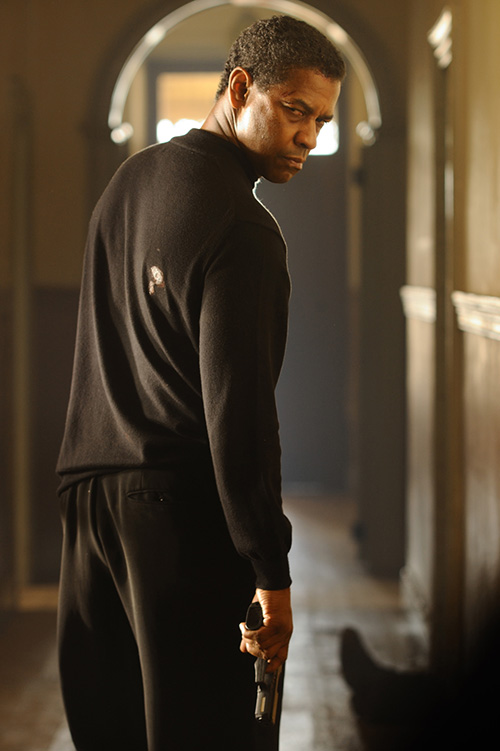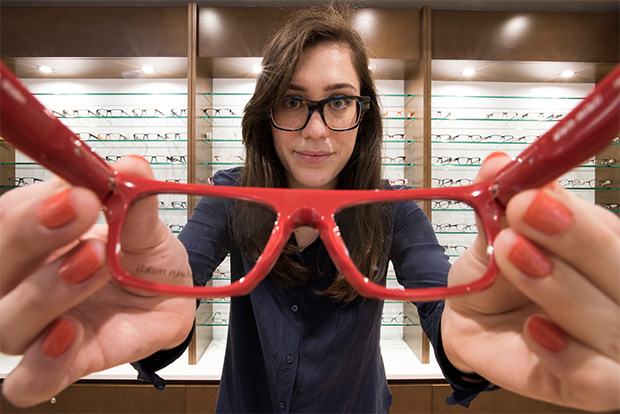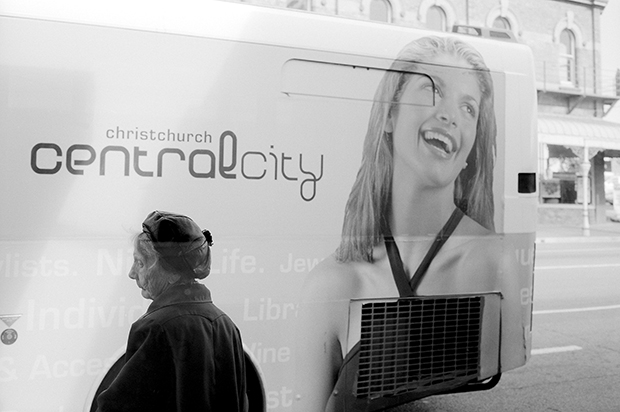In the market for a new lens? For great image quality at the lowest price, you can't beat prime lenses, writes Anthony McKee.
Decades ago SLR cameras were sold with a choice of two lenses – a 50mm f/1.4 lens or a 50mm f/1.8 lens. For keen photographers the 50mm f/1.4 was the sought-after option, but for most people the 50mm f/1.8 lens was the popular choice because it was cheaper, smaller and lighter. Once out of the store, most people would struggle to even notice the difference between the two; the f/1.4 lens had a slightly larger aperture that was valuable in low light, but otherwise both were capable of making great photos.
The 50mm is referred to as a 'normal' or “standard' lens because it has a similar field-of-view to the human eye, but the 50mm is also a 'prime' lens because it has a fixed focal length. What this means is that if you want a create a wider or narrower view of a subject, you’ll have to change to a wide-angle or telephoto lens.
Years ago it wasn’t uncommon for photographers to keep several prime lenses in their camera bags. Carrying the gear was not so much of a problem as changing lenses in a hurry when the action moved closer or further away. Today zoom lenses are sharper than ever before and they can usually provide both amateur and pro photographers with all the focal lengths they need in the simple twist of a wrist. But zoom lenses aren’t perfect either; the majority have slow maximum apertures (usually in the range of f/3.5-f/5.6) and those professional zoom lenses with fixed maximum apertures of f/2.8 are big, heavy and expensive.

Australian movie stills photographer Jasin Boland regularly uses prime lenses in his work. "For me, a prime lens just pops; I love shooting my primes under 2.8 because there is just something about a prime that draws your eyes and tells the story of what’s going on inside all that emotion." This portrait of Denzel Washington was shot by Boland for the movie ‘Safe House’. Photo by Jasin Boland.
PRIME BY NUMBERS
It’s no surprise then, that prime lenses still have a place in many photographers’ camera bags. In fact, of late, prime lenses have been experiencing somewhat of a resurgence. To understand why prime lenses are still popular, it’s worth looking at the numbers. To begin with, many prime lenses have a maximum aperture of f/1.4 which, when used wide open, can let three stops (the equivalent of 8x) more light into a camera than a zoom lens with a maximum aperture of f/4.
This gives you options, particularly when working in low light. There is the option to increase your shutter speed by three stops (say from 1/60s to 1/500s) which can be useful when photographing action or sports in twilight or indoor conditions. Alternatively you can to lower your ISO by three stops (from ISO 3200 down to ISO 400). This can be appealing if you’re using your DSLR for videography or astrophotography.
For those who just like capturing candid images at parties, fast prime lenses can also enable you to capture photographs without the intrusion of a flash, and for those who like working with flash, that three stop increase in aperture can more than double the effective range of your existing flash.
There are also creative advantages in using 'fast' prime lenses. Compared to most consumer zoom lenses, the fast maximum aperture of prime lenses can provide a noticeably shallower depth-of-field, particularly with some of the longer prime lenses. Many photographers and videographers are also now buying lenses like the 50mm f/1.4 and the 85mm f/1.4 specifically to get the soft, blurred backgrounds these lenses can create in portraits. 
Many portrait photographers love working with prime lenses, not just because they can achieve very shallow depth-of-field, but because the lenses themselves are often small and less intimidating. This portrait by New Zealand photographer Mandi Lynn was made using the Canon 85mm f/1.8 lens, with the aperture set to its widest position of f/1.8. Photo by Mandi Lynn.
FAST IS GOOD
Fast apertures on prime lenses also have practical advantages. The increase in light into the camera not only helps you to see the subject in dull conditions, it also assists the camera’s autofocus system to work in low light. Technical photographers also prefer prime lenses for photographing time-lapse and series photographs because they guarantee a consistent field-of-view in every shot – something you can’t always guarantee with zoom lenses.
But fast apertures are not the only appeal of prime lenses. Documentary photographers prefer working with small prime lenses because they’re less intimidating when photographing people in close quarters, and many travel photographers prefer primes because they’re less conspicuous than zooms, and their lighter weight makes them easier to carry around on a long day.
It might upset a few people to mention this, but prime lenses are also frequently sharper than zooms. This was not much of a concern to photographers a few years ago, when 6-megapixel DSLRs were considered a technological marvel, but now DSLR cameras are being made with 24- and even 36-megapixel sensors, it has become blatantly obvious which lenses are and are not 'cutting the mustard'.
One of the great features of the new Nikon AF-S 20mm f/1.8G ED (used for this shot) is its close focusing capabilities. I was actually able to focus on the glasses in the foreground, but I opted to focus on Matilda, my optometrist in Melbourne’s Emporium. At f/16, the depth-of-field is enough to let us see the glasses on the shelves, and get a good sense of the foreground. Aside from the glasses, no corrections were applied to this image. The exposure was f/16 at 1/15s and ISO 3200. The Nikon D810 SLR was set on a tripod. Photo by Anthony McKee.
PRIME OPTIONS
Lens manufacturers seem very aware of this fact. Over the past year, Sigma and Zeiss have both produced a range of new f/1.4 prime lenses which have been designed to deliver maximum image quality to high-definition sensors. The only problem with these lenses is that in many cases they are both large (the Sigma 50mm f/1.4 DG Art lens weighs in at 815 grams) and very expensive. The Sigma is selling for $1049 while the Zeiss Otus 55mm f/1.4 costs over $4500!
Fujifilm is creating interesting primes for its X-mount range of APS-C cameras. Last year it announced a 56mm f/1.2 R lens (the equivalent of an 85mm lens in the 35mm format) and recently it released a newer version of this lens, the 56mm f/1.2 R APD that has a built-in apodization filter which improves the bokeh effect of images. Fujifilm has also mentioned it will be releasing a new 16mm f/1.4 in the near future (equivalent to a 24mm in the 35mm format). For the moment the 56mm f/1.2 R lens is selling for about $1250, while the prices for the 56mm f/1.2 R APD and the 16mm f/1.4 are likely to be a bit higher again.
Canon and Nikon also make a good range of prime lenses and over recent times they have been adding to their line ups. In its fast range of prime lenses Canon has the 24mm f/1.4L II, the 35mm f/1.4L, a 50mm f/1.4 and two f/1.2 lenses, the 50mm f/1.2L and the 85mm f/1.2L. With the exception of the 50mm f/1.4 lens at $475, those other quality lenses will likely cost you closer to $2000 each. 
The Canon 85mm f/1.2 L Series lens (left) is an exceptional piece of glass, but it weighs just over 1-kilogram and costs about $2,700. The smaller Canon 85mm f/1.8 (right) weighs just 425 grams, costs $500 and although it is about a stop slower than its f/1.2 sibling, it’s easier to carry and less intimidating when you point it at subjects.
Nikon also has some beautiful fast glass, including the 24mm f/1.4, the 35mm f/1.4, a 50mm f/1.4, the recently announced 58mm f/1.4G and the 85mm f/1.4. Again, with the exception of the 50mm f/1.4G at $599, the other lenses will cost you closer to $2000 each. This might seem disappointing news for some, particularly after we have sold you the glories of fast prime lenses, but there is more to this story. Both Canon and Nikon also make a range of f/1.8 prime lenses and aside from being smaller and lighter than the f/1.4 and f/1.2 lenses, they’re also much more affordable.
Canon caught my attention a few years ago when it released its EF 28mm f/1.8 USM lens at a modest price of $600. With its f/1.8 maximum aperture, this 28mm was about 2/3rd of a stop slower than the Canon 24mm f/1.4 lens, but it was over one stop faster than the Canon 28mm f/2.8 lens of the era. For the price, this lens was not only a good option for photographers looking for a moderately fast wide-angle prime lens on a budget, it also nicely complemented the Canon 50mm f/1.8 (at $149) and 85mm f/1.8 ($499) lenses for its full-frame cameras.
Canon also has a 24mm f/2.8 Image Stabilised lens in its range, which might be more appealing to some photographers than the 28mm f/1.8 lens or the faster 24mm f/1.4L II lens. Worth noting though, is that image stabilisation is good for reducing movement induced by the photographer if they are hand-holding a camera, but image stabilisation will not compensate for movement of the subject. For this reason, prime lenses with a bigger maximum aperture to let in more light (and therefore give you the opportunity to use faster shutter speeds) are always going to be a better option for freezing action than image-stabilised lenses. 
While the Nikon 35mm f/1.4 (left) and Nikon 35mm f/1.8 FX (right) share the same field-of-view, the f/1.8 version is half the weight and a third of the price. While the f/1.4 lens is well suited to working in dim conditions, the f/1.8 is a better travel lens. The two-thirds of a stop difference in brightness is also easily compensated for by adjusting up the ISO rating.
More recently Nikon has also been developing new f/1.8 lenses. Like Canon, Nikon has always had a 50mm f/1.8 lens and an 85mm f/1.8 lens in its range, but two years ago Nikon released its 28mm f/1.8G lens, and in the past year Nikon has also added a 35mm f/1.8G lens and a 20mm f/1.8G lens to this line-up, all of which are suited for Nikon FX format cameras.
Like Canon, these Nikon f/1.8 lenses are about half the size and half the weight of their f/1.4 siblings and they are also rather affordable. The Nikon 50mm f/1.8G has a street price of about $300, the 85mm f/1.8G is $650, the 35mm f/1.8G (FX) is $680, the 28mm f/1.8G is $890 and the new Nikon 20mm f/1.8G sells for $1,100. In all, there is only two thirds of a stop difference between an f/1.4 lens and an f/1.8 lens, which is not a huge difference, but the f/1.8 lens is still more than a stop faster than f/2.8 prime and zoom lenses, which can be really useful.

The new Nikon 20mm f/1.8G ED lens is one of the widest fast prime lens available for DSLR cameras. The lens has a horizontal coverage of 94-degrees and a maximum aperture of f/1.8. It’s ideal for all documentary and astro photographers.
HOW FAST?
Some professional photographers are probably going to buy f/1.4 prime lens because it does give them a two-stop advantage over their f/2.8 lenses and they can write these lenses off in tax! For amateurs who regularly use f/3.5-f/5.6 zoom lenses though, an f/1.8 prime lens will offer you just as much advantage. For me, the decision is about more than just cost.
When you buy these lenses, you also have to carry them around with you, and for that, my money is with the smaller and more compact f/1.8 lenses. Convenience does count!
Besides, as I mentioned at the beginning, once you walk out of the store, you’re not likely to notice the difference between the two.
Documentary photographers love working with prime lenses simply because they are small and inconspicuous by comparison to most modern zoom lenses. This photograph was made by New Zealand fine-art photographer, Doc Ross using a wide prime lens. Photo by Doc Ross.










